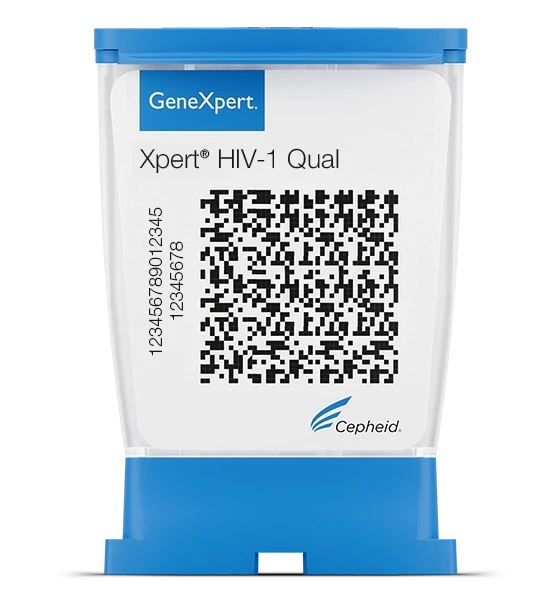
Xpert® HCV VL Fingerstick
Point-of-Care Testing and Linkage to Care
Sign in or create a MyCepheid account to add items to cart
Test pack size(s)

Tests
GXHCV-VL-FS-CA-10
Qty
Unit price
Subtotal
USD
Product is not available for purchase in your region.
Collection devices

Sarstedt Minivette POCT 100 μl(Pack of 100)
MINIVETTE100E-100
Qty
Unit price
Subtotal
USD
Product is not available for purchase in your region.
Total
{{currency}}
0
Error adding items to cart. If this error persists, please contact Digital Support
The Need
- To accelerate HCV elimination efforts, diagnostic paradigms will have to be simplified.1
- Confirmation of viremia with HCV RNA for positive antibody-based tests may require venipuncture, preparation and transport of blood specimens, laboratory expertise, and days/weeks to obtain results.1
- An HCV RNA test at the point of care has potential to simplify testing algorithms, increase diagnosis rates, and lead to increased linkage to care.2
1 Jordan J Feld, What Is Needed to Move Toward Single-Step Diagnosis of Current HCV Infection?, The Journal of Infectious Diseases, Volume 229, Issue Supplement_3, 15 May 2024, Pages S316–S321, https://doi.org/10.1093/infdis/jiad453
2 Updated recommendations on simplified service delivery and diagnostics for hepatitis C infection: WHO policy brief (24 June 2022), page 16
2 Updated recommendations on simplified service delivery and diagnostics for hepatitis C infection: WHO policy brief (24 June 2022), page 16
The Solution
- The Xpert® HCV VL Fingerstick test is intended for use as an aid in the diagnosis of active HCV infection in individuals suspected to be actively infected with HCV antibody evidence, and individuals at risk for HCV infection with antibodies to HCV. It is intended for use as an aid in the management of HCV infected patients undergoing antiviral therapy. The test measures HCV RNA levels at any time during viremia and during treatment.
- The point-of-care test simplifies diagnosis of Hepatitis C infections by providing patients with viral load results in a single visit in less than an hour, thereby offering immediate linkage to care.
The Impact
- Simplifies HCV diagnosis: shifting from five steps5 to a two step test-and-treat point-of care model speeds up time to treatment and and promotes improved linkage to follow-up services.3
- Improves access to testing for marginalized groups: point-of-care testing in community settings enables reaching the populations most vulnerable to HCV infection.4
- Increases diagnosis and linkage to care: increased uptake of HCV treatment and transmission prevention.1
1 Jordan J Feld, What Is Needed to Move Toward Single-Step Diagnosis of Current HCV Infection?, The Journal of Infectious Diseases, Volume 229, Issue Supplement_3, 15 May 2024, Pages S316–S321, https://doi.org/10.1093/infdis/jiad453
3 Applegate TL, Fajardo E, Sacks JA. Hepatitis C Virus Diagnosis and the Holy Grail. Infect Dis Clin North Am. 2018;32(2):425-445. doi:10.1016/j.idc.2018.02.010
4 Lettner B, Mason K, Greenwald ZR, Broad J, Mandel E, Feld JJ, Powis J. Rapid hepatitis C virus point-of-care RNA testing and treatment at an integrated supervised consumption service in Toronto, Canada: a prospective, observational cohort study. Lancet Reg Health Am. 2023 May 17;22:100490. doi: 10.1016/j.lana.2023.100490. PMID: 37388709; PMCID: PMC10300568
5 Grebely et. al., 2017, Hepatitis C point-of-care diagnostics: in search of a single visit diagnosis, Expert Review of Molecular Diagnostics, DOI: 10.1080/14737159.2017.1400385
3 Applegate TL, Fajardo E, Sacks JA. Hepatitis C Virus Diagnosis and the Holy Grail. Infect Dis Clin North Am. 2018;32(2):425-445. doi:10.1016/j.idc.2018.02.010
4 Lettner B, Mason K, Greenwald ZR, Broad J, Mandel E, Feld JJ, Powis J. Rapid hepatitis C virus point-of-care RNA testing and treatment at an integrated supervised consumption service in Toronto, Canada: a prospective, observational cohort study. Lancet Reg Health Am. 2023 May 17;22:100490. doi: 10.1016/j.lana.2023.100490. PMID: 37388709; PMCID: PMC10300568
5 Grebely et. al., 2017, Hepatitis C point-of-care diagnostics: in search of a single visit diagnosis, Expert Review of Molecular Diagnostics, DOI: 10.1080/14737159.2017.1400385




